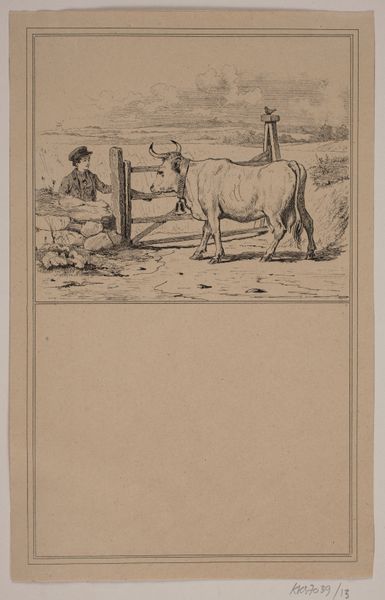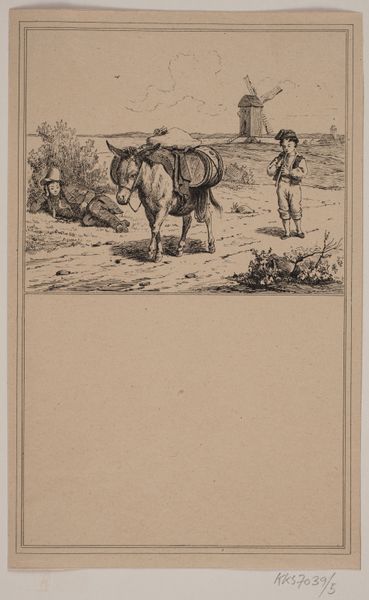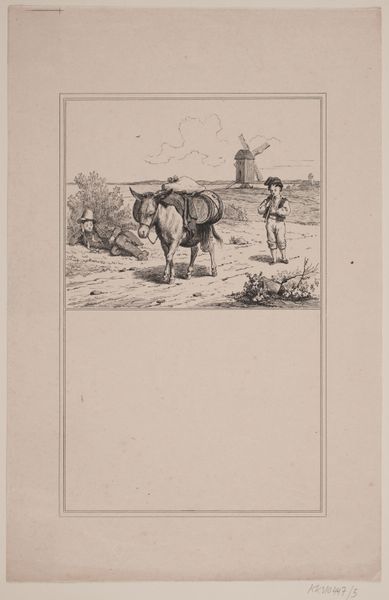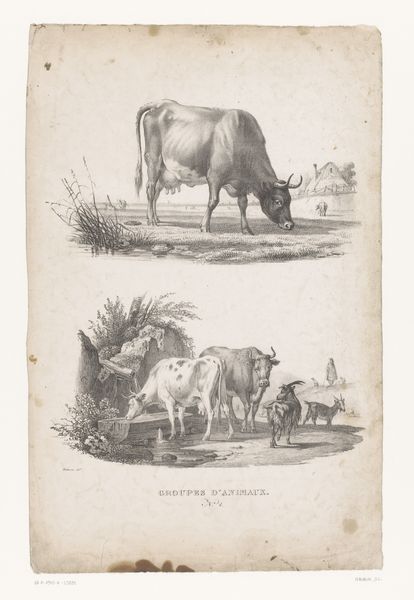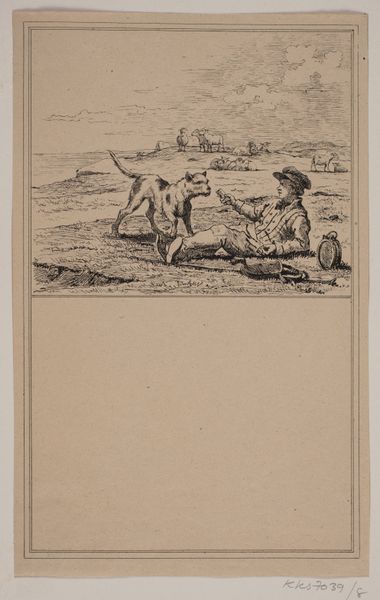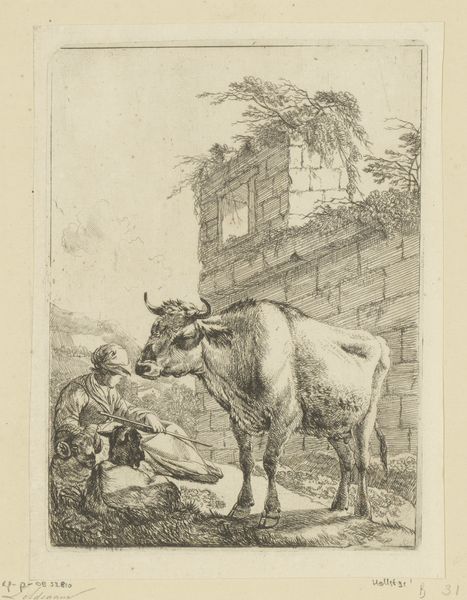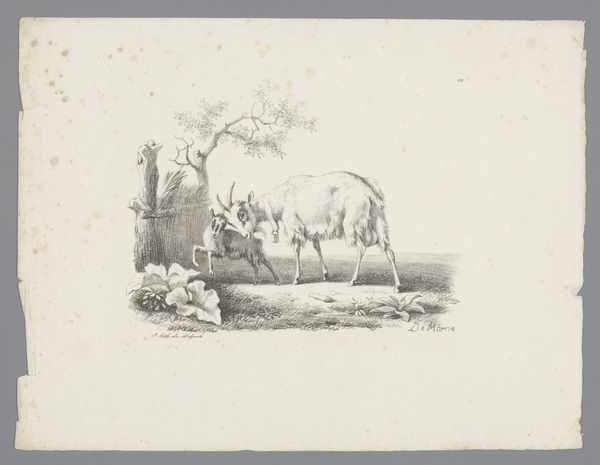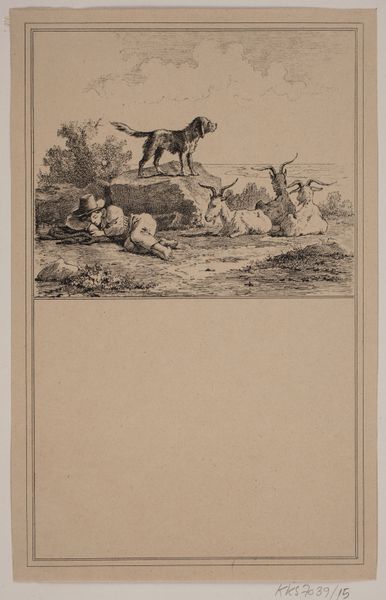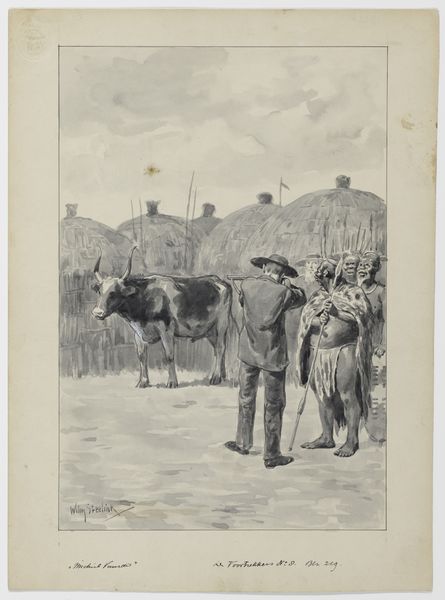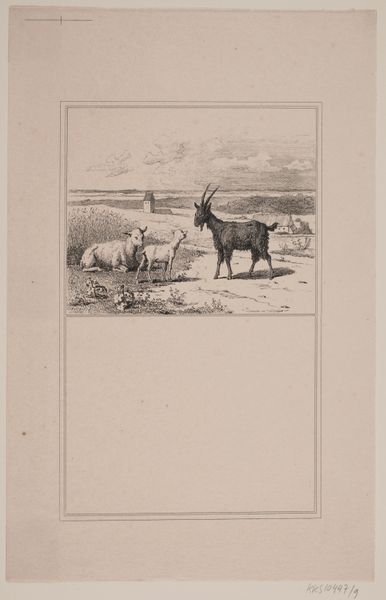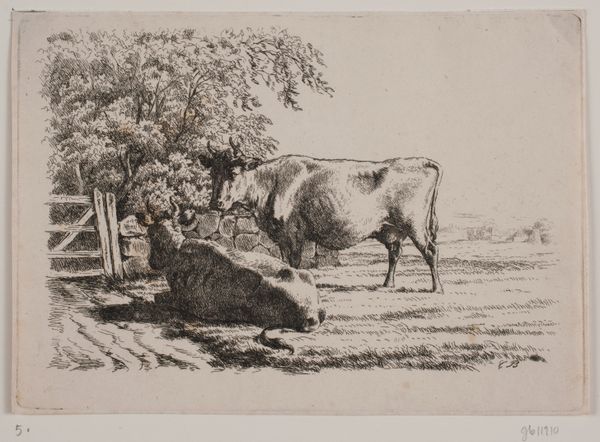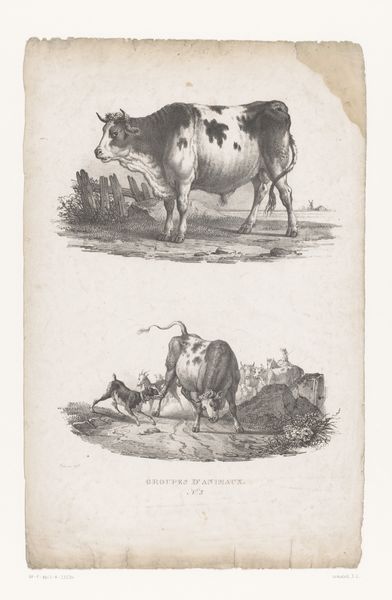
Koen ved vandning. Nr. 15 i Chr. Winther og M. Rørbye, "25 Billeder for små børn" 1846
0:00
0:00
drawing, lithograph, print, pencil
#
drawing
#
lithograph
# print
#
landscape
#
pencil
#
line
#
genre-painting
#
realism
Dimensions: 205 mm (height) x 130 mm (width) (brutto)
Editor: This is "Cows being watered", made in 1846 by Adolph Kittendorff as part of a children's book with Christian Winther and M. Rørbye. It’s a lithograph showing a young boy overseeing two cows at a watering trough. What immediately strikes me is how… ordinary the scene is. What do you see in it? Curator: It's seemingly a simple genre scene, yes, but it participates in a broader cultural conversation about the idealization of rural life in 19th-century Denmark. It evokes the public's sentimentality and an element of social control by illustrating an expected class structure in Danish society. The image naturalizes the child’s role, possibly as a serf in a field dominated by cattle. Where do you think such idealized depictions are most prominently found? Editor: I suppose you would see them in books and instructional material aimed at families and the middle class? Something teaching about virtues or the proper role for different individuals in the rural life? Curator: Precisely. These images, seemingly benign, play an active role in constructing and reinforcing societal norms. Look at the way the cows are positioned – almost as figures of prosperity against the background. The pastoral scene is idealized to project certain values. Is it an objective reality, do you think, or something manufactured? Editor: Certainly manufactured, especially when we consider it was intended for children, implying a sense of romanticism connected to the realities of farming. Were there opposing representations of rural life in art at that time? Curator: Absolutely. You find a counter-narrative in other artistic circles. They challenge these idealizations. But what is intriguing about "Cows being watered" is its dual existence: both a piece of art and a didactic tool. And its position as a common everyday activity that the general public identifies with, promoting these activities is socially desirable. Editor: I see. So, on the surface it’s a simple picture of rural life, but underneath, it’s doing work to shape how people perceive and value that life. Curator: Precisely. That intersection of art and social function makes it so interesting to examine from a historical point of view. Thank you for pointing that out! Editor: Thank you. I hadn’t considered how much it reveals about social values.
Comments
No comments
Be the first to comment and join the conversation on the ultimate creative platform.
